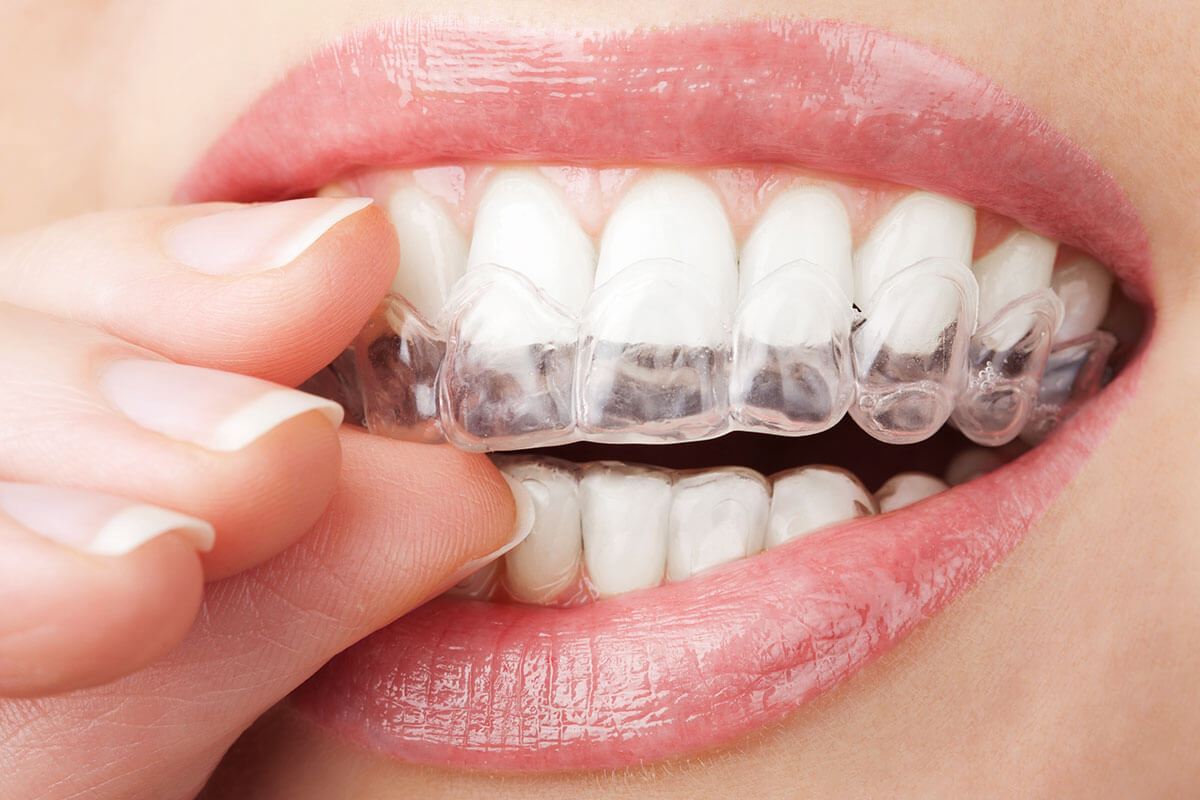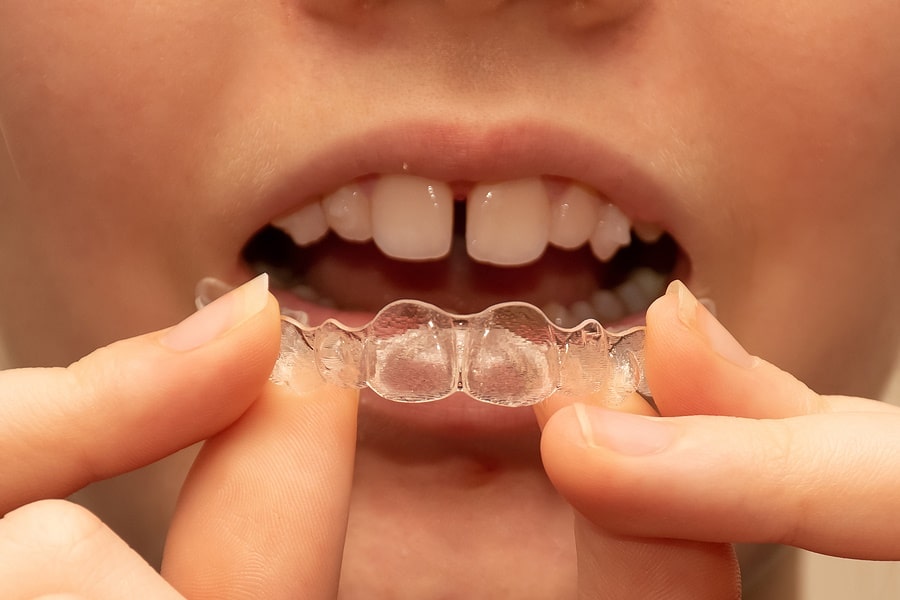Invisalign vs. Standard Dental braces: Which Option Is Right for You?
When taking into consideration orthodontic treatment, the selection between Invisalign and standard braces presents numerous crucial variables that warrant mindful evaluation. Invisalign provides a very discreet option with detachable aligners, while traditional braces give a more noticeable yet efficient service for extreme misalignment.
Overview of Therapy Options

In comparison, typical dental braces contain steel brackets and wires that are bound to the teeth. This method uses continuous pressure gradually to accomplish alignment. While efficient for complex orthodontic issues, conventional dental braces need normal gos to for modifications and can posture challenges in preserving dental hygiene as a result of the difficulty of cleansing around braces and cables.
Both options have their benefits, and the choice frequently rests on specific dental conditions, way of life preferences, and client conformity. Inevitably, getting in touch with an orthodontic professional is crucial for figuring out one of the most suitable treatment plan customized to individual demands. Comprehending the subtleties of each choice can dramatically affect the total success of orthodontic therapy.
Visual Considerations
A substantial element influencing the selection between Invisalign and conventional dental braces is the aesthetic allure each therapy provides. Invisalign aligners are crafted from clear plastic, making them basically unseen when put on. This very discreet appearance is especially appealing to adults and teens who may really feel awkward concerning their orthodontic treatment. The capability to preserve an all-natural smile throughout the positioning procedure can considerably enhance the patient's confidence in professional and social setups.
On the other hand, conventional dental braces include metal braces and cables, which can be extra noticeable. While innovations in orthodontic technology have actually brought about the development of smaller brackets and colored elastics, conventional dental braces still maintain an even more conspicuous profile. For some people, the visibility of braces may prevent them from seeking required treatment.
Inevitably, the option between Invisalign and traditional braces might pivot on individual choices pertaining to aesthetic appeals. Individuals who prioritize discretion frequently lean towards Invisalign, while those who are much less worried about presence might opt for typical dental braces. Comprehending the visual ramifications of each alternative is essential for making an informed decision that straightens with one's way of living and preferences.
Convenience and Convenience

In regards to convenience, Invisalign aligners are detachable, enabling people to enjoy their favorite foods without limitation and preserve optimum dental hygiene. Cleaning and flossing are simplified, as the aligners can be obtained throughout these routines, whereas typical braces require mindful maneuvering around braces and cables.
In addition, Invisalign's dynamic system permits less orthodontic sees. People generally receive several collections of aligners at once, which can simplify the therapy process and minimize time spent in the orthodontist's chair. In contrast, standard dental braces require regular modifications, making them much less practical for those with busy timetables. Invisalign. Overall, the convenience and ease of Invisalign make it an appealing selection for websites numerous people looking for orthodontic therapy.
Treatment Period and Efficiency
While both Invisalign and typical dental braces are effective in remedying dental misalignments, the period of treatment can differ considerably between the 2 alternatives. Commonly, Invisalign therapy can take anywhere from 12 to 18 months, relying on the intricacy of the situation. The clear aligners work by slowly moving teeth into their desired positions, and normal follow-ups with an orthodontist aid ensure progress continues to be on track.
On the other hand, conventional braces frequently need a longer commitment, typically varying from 18 months to 3 years. This is due to their set nature and the usage of cords and braces, which can be much more efficient for serious imbalances and complex situations (Invisalign). The treatment performance of standard braces is well-documented, as they enable precise modifications and greater control over tooth movement
Eventually, the choice between Invisalign and conventional braces might rest on both the awaited treatment period and the certain oral concerns available. Consulting with an orthodontist is critical, as they can offer customized suggestions based upon individual needs, making sure the picked approach straightens with preferred durations and results.
Expense Comparison and Insurance Options
Price plays a considerable role in the decision-making procedure for individuals taking into consideration orthodontic therapy, whether going with Invisalign or conventional dental braces. Typically, the expense of Invisalign varieties from $3,000 to $8,000, while typical dental braces commonly set you back between $2,000 and $6,000. Elements affecting these prices include the complexity of the situation, the period of therapy, and geographical location.
Several dental insurance strategies supply partial coverage for orthodontic treatments, but the specifics can differ widely. Normally, standard braces may be a lot more frequently covered by insurance coverage plans contrasted to Invisalign, which some insurance providers categorize as an aesthetic procedure.
Additionally, numerous orthodontic practices provide versatile layaway plan, making both treatment alternatives more accessible. Patients ought to ask about possible funding alternatives and discount rates for upfront payments. Reviewing the total price, including insurance coverage benefits and layaway plan, is vital for making an educated decision that aligns with both visual choices and budget plan factors to consider.

Conclusion
In recap, the choice in between Invisalign and traditional dental braces depends upon several variables, including visual choices, comfort, therapy duration, and expense. Invisalign offers a discreet, removable alternative that assists in oral hygiene and nutritional adaptability, you could try here while traditional braces may be visit this web-site preferable for complicated oral issues and often come at a reduced price factor. Eventually, appointment with an orthodontist is necessary to analyze individual conditions and figure out the most suitable therapy option for accomplishing optimal oral positioning.
When thinking about orthodontic therapy, the option in between Invisalign and conventional dental braces provides several vital variables that merit careful analysis.Contrasting Invisalign and typical braces discloses distinctive therapy choices for orthodontic adjustment.While both Invisalign and conventional dental braces are efficient in dealing with oral misalignments, the duration of therapy can vary considerably between the two alternatives.Price plays a substantial duty in the decision-making process for individuals thinking about orthodontic therapy, whether choosing for Invisalign or typical dental braces.In recap, the choice in between Invisalign and standard braces pivots on multiple factors, including aesthetic choices, convenience, treatment duration, and cost.